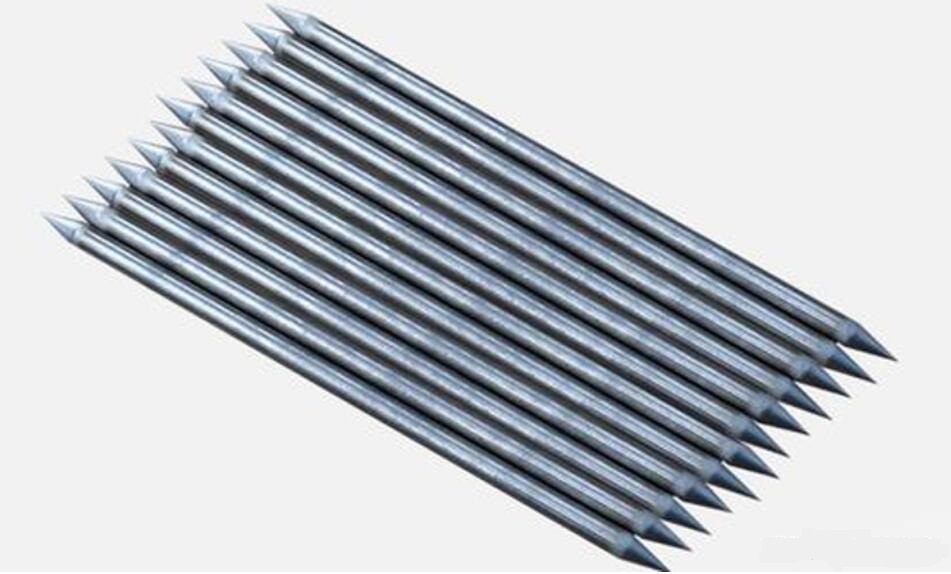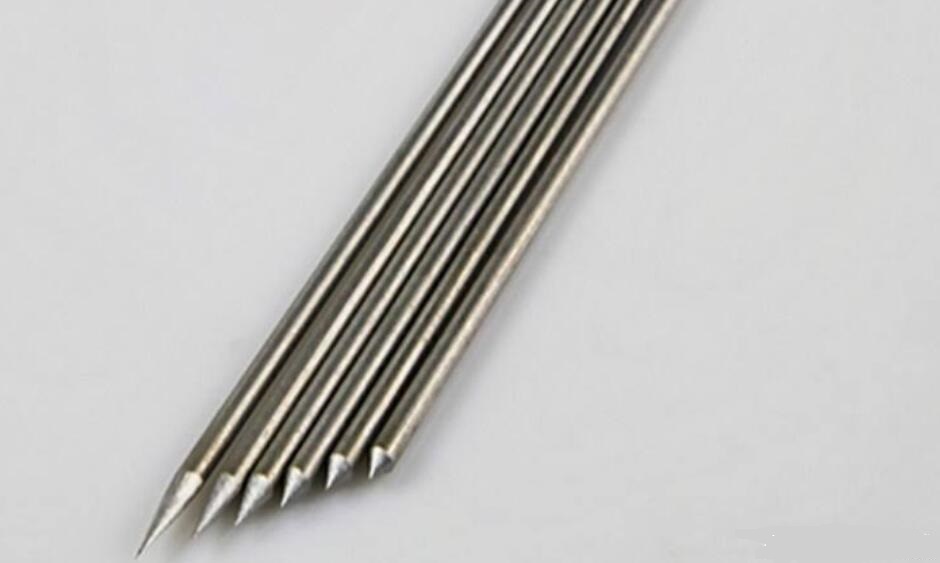Tungsten Needle

Tungsten Needle
The tungsten needle is a typical tungsten product. It has a silvery-white appearance, a slender structure, a length of 20mm-150mm, and a diameter of 0.5mm-10mm. Generally, tungsten needles of different sizes can be selected according to actual use.

Tungsten Needle
Properties of Tungsten Needle
Since tungsten needles are produced with pure tungsten or tungsten alloys as raw materials, they also have the physical and chemical properties of pure tungsten or tungsten alloys. Tungsten needles have the advantages of high density, high melting point, high hardness, high tensile strength, good wear resistance, excellent ductility, and excellent electrical conductivity. However, the tip of a tungsten needle with a pointed tip is easy to bend or break.
Types of Tungsten Needle
According to different design shapes, tungsten needles can be divided into round rod-shaped tungsten needles and tungsten needles with a pointed tip. Their properties are basically the same, but their uses are slightly different.
The round rod-shaped tungsten needle is a slender cylindrical pure tungsten or tungsten alloy, mainly used as an electrode for argon arc welding. During welding, an arc will be generated between the tungsten electrode and the workpiece, and under the action of the arc heat, the filler metal will melt with the workpiece to form a weld.
Precautions for argon arc welding: the welding current should not be too large, and the distance between the tungsten needle and the workpiece should not be too far. Otherwise, it is easy to melt or burn the electrode.
The pointed tungsten needle can be simply understood as pure tungsten or tungsten alloy with pointed ends at one or both ends. It is mainly used as an instrument probe, such as a digital four-probe tester. The distance between the four tungsten needles in the digital four-probe tester cannot be too long or too short, and each has different functions.
Production Process of Tungsten Needle
There are two main production processes for tungsten needles: one is the metal injection process, and the other is the wire drawing process.
The metal injection process: first, the solid powder is uniformly mixed with the organic binder, and after granulation, it is injected into the mold cavity with an injection molding machine in the state of heating and plasticization to solidify and shape; then the binder in the formed blank is removed by chemical or thermal decomposition, and finally sintered and densified to obtain the final tungsten needle product.
The wire drawing process: the metal raw material is heated to plasticity, then stretched to the desired diameter, and finally sheared and cooled.
Uses of Tungsten Needle
In addition to being used as argon arc welding electrodes and instrument probes, tungsten needles can also be used for engraving metal surfaces, cutting particles in rubber wool, handling single particles, and blowing crystal embryos and glass.
Conclusion
Thank you for reading our article and we hope it can help you have a better understanding of the tungsten needle. If you want to learn more about tungsten or other types of refractory metals and alloys, we would like to advise you to visit Advanced Refractory Metals (ARM) for more information.
Headquartered in Lake Forest, California, USA, Advanced Refractory Metals (ARM) is a leading manufacturer & supplier of refractory metals & alloys across the world. It provides customers with high-quality refractory metals & alloys such as molybdenum, tantalum, rhenium, tungsten, titanium, and zirconium at a very competitive price.
{{item.content}}
LEVE A REPLY
{{item.children[0].content}}
{{item.content}}






